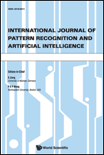
INTERNATIONAL JOURNAL OF PATTERN RECOGNITION AND ARTIFICIAL INTELLIGENCE
Scope & Guideline
Exploring the Synergy of Pattern Recognition and AI
Introduction
Aims and Scopes
- Pattern Recognition Techniques:
The journal publishes research on various pattern recognition techniques, including machine learning, deep learning, and computer vision methods applied to diverse data types such as images, videos, and signals. - Artificial Intelligence Applications:
It explores applications of AI in real-world problems, including healthcare, transportation, security, and environmental monitoring, highlighting innovative solutions and methodologies. - Interdisciplinary Research:
The journal encourages interdisciplinary approaches that combine computer science with other fields, such as biology, medicine, and social sciences, to address complex challenges. - Algorithm Development and Optimization:
Research focused on the development and optimization of algorithms for improved performance in recognition tasks, including enhancements to existing algorithms and novel algorithmic solutions. - Data Fusion and Multimodal Learning:
The publication includes studies on data fusion techniques and multimodal learning that integrate data from multiple sources to enhance recognition accuracy and robustness.
Trending and Emerging
- Deep Learning Innovations:
There is a significant increase in papers focusing on deep learning innovations, including new architectures, optimization techniques, and applications in various domains such as healthcare, security, and autonomous systems. - Explainable AI and Interpretability:
Research on explainable AI is gaining traction, with a focus on making AI models more interpretable and transparent, addressing concerns about the black-box nature of deep learning algorithms. - Real-Time Processing and Edge Computing:
The journal is witnessing a rise in studies dedicated to real-time processing techniques and the application of edge computing for pattern recognition tasks, facilitating immediate analysis and decision-making. - Generative Models and Adversarial Learning:
Emerging themes include the use of generative models and adversarial learning approaches, particularly in image synthesis, data augmentation, and anomaly detection. - Integration of AI with IoT and Smart Systems:
There is a growing focus on the integration of AI with the Internet of Things (IoT), emphasizing smart systems and applications that leverage AI for enhanced functionality and efficiency.
Declining or Waning
- Traditional Machine Learning Methods:
There is a noticeable decline in research centered around traditional machine learning methods, as the field increasingly shifts towards deep learning and more complex AI models that offer better performance on large datasets. - Basic Image Processing Techniques:
Research papers that focus solely on basic image processing techniques are becoming less frequent, as the field evolves towards more sophisticated methods that incorporate AI and machine learning for enhanced outcomes. - Theoretical Studies with Limited Practical Application:
The journal is seeing fewer theoretical studies that do not demonstrate practical applications or real-world relevance, as the emphasis on applicable research that addresses current challenges grows. - Conventional Feature Extraction Methods:
There is a reduction in studies focused on conventional feature extraction methods, with a trend towards integrated and learned feature representations through deep learning architectures. - Single-Modal Analysis:
The focus on single-modal analysis, particularly in image or text processing without considering multimodal approaches, appears to be waning as researchers recognize the value of integrating diverse data types.
Similar Journals
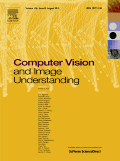
COMPUTER VISION AND IMAGE UNDERSTANDING
Illuminating Innovations in Computer VisionCOMPUTER VISION AND IMAGE UNDERSTANDING is a leading academic journal published by Academic Press Inc, Elsevier Science, dedicated to the advancement of the fields of computer vision, image understanding, and pattern recognition. Since its inception in 1993, this esteemed publication has garnered a reputation for excellence, achieving a remarkable Q1 ranking in the categories of Computer Vision and Pattern Recognition, Signal Processing, and Software as of 2023. With its robust impact factor and high visibility in the scientific community—ranking #22 out of 106 in Computer Vision and Pattern Recognition and #27 out of 131 in Signal Processing—this journal serves as a vital resource for researchers, professionals, and students looking to explore and contribute to state-of-the-art developments. Although it does not operate under an Open Access model, its rigorous peer-reviewed content ensures quality and relevance in a rapidly evolving technological landscape. The journal’s commitment to fostering innovation makes it an essential tool for anyone engaged in the study and application of computer vision technologies.
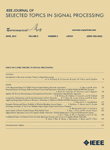
IEEE Journal of Selected Topics in Signal Processing
Shaping the Future of Signal Processing ResearchIEEE Journal of Selected Topics in Signal Processing is a premier academic publication dedicated to the advancement of knowledge in the field of signal processing. Published by IEEE-INST ELECTRICAL ELECTRONICS ENGINEERS INC, the journal boasts an impressive impact factor that places it in the top tier of its category; ranked Q1 in both Electrical and Electronic Engineering and Signal Processing for 2023. Given its esteemed standing, the journal serves as a vital resource for researchers, professionals, and students alike, providing cutting-edge insights and developments that shape the future of signal processing. The journal encompasses a wide array of topics relevant to the evolving landscapes of electrical engineering and computer science, with particular significance in innovative applications and methodologies. As a platform for disseminating high-quality research, this journal remains essential for those seeking to stay at the forefront of this dynamic field. You can explore the latest contributions and findings, benefiting from the journal's influential status in the realm of signal processing.
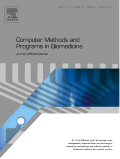
Computer Methods and Programs in Biomedicine
Advancing the Future of Biomedicine through Computational Innovation.Computer Methods and Programs in Biomedicine, published by ELSEVIER IRELAND LTD, is a leading journal at the intersection of computer science and biomedical research. With an impressive impact factor evidenced by its Q1 rankings in multiple categories—Computer Science Applications, Health Informatics, and Software—this journal ranks highly among peer publications, showcasing its significance in advancing interdisciplinary research. Covering a wide array of topics since its inception in 1985, it is particularly crucial for those invested in the innovation of computational methods applied to the biomedical field. The journal has established a strong reputation, with Scopus rankings placing it in the top percentiles across its relevant sectors, including the 14th position out of 138 in Health Informatics. Researchers, practitioners, and students looking to explore current trends, methodologies, and advancements in biomedical applications of computer science will find this journal an invaluable resource.

Open Computer Science
Pioneering discussions that shape the tech landscape.Open Computer Science is a premier scholarly journal published by DE GRUYTER POLAND SP Z O O, dedicated to fostering innovative research and discussions in the rapidly evolving field of computer science. With an impact factor that places it in Q2 of the computer science (miscellaneous) category, as well as a commendable Scopus ranking of #80 out of 232 and a 65th percentile standing, this journal serves as a critical resource for researchers, professionals, and students alike. Since its inception in 2011 and having embraced the open access model, Open Computer Science promotes the dissemination of knowledge across a global audience, ensuring that cutting-edge research is accessible to all. By covering a broad range of topics within the realm of computer science, this journal is committed to advancing the discipline’s theoretical and practical boundaries. The journal is published in Germany and features robust editorial standards, ensuring the inclusion of high-quality, peer-reviewed articles that contribute significantly to the field.
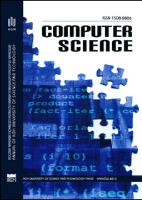
Computer Science-AGH
Fostering Innovation Through Open Access KnowledgeComputer Science-AGH, published by the AGH University of Science & Technology Press in Poland, is an esteemed open access journal that has been disseminating high-quality research since 2004. With ISSN 1508-2806 and E-ISSN 2300-7036, this journal focuses on a diverse range of areas within the computer science discipline, including but not limited to Artificial Intelligence, Computational Theory, Computer Graphics, and Networks. While it currently holds a Q4 ranking across several categories as of 2023, it actively promotes research that contributes to the academic community's understanding and evolution in the field. The journal's commitment to open access ensures that vital research is accessible to a wider audience, fostering collaboration and innovation. With its comprehensive focus and strategic publication goals, Computer Science-AGH plays a crucial role in advancing the frontiers of computer science research and education, making it an invaluable resource for researchers, professionals, and students alike.

Computational Visual Media
Revolutionizing the intersection of technology and creativity.Computational Visual Media, published by TSINGHUA UNIVERSITY PRESS, is a premier open access journal dedicated to advancing the fields of Artificial Intelligence, Computer Graphics and Computer-Aided Design, and Computer Vision and Pattern Recognition. Since its inception in 2015, it has established a robust position within the academic community, consistently achieving Q1 rankings across its categories as of 2023. With exceptional Scopus rankings, including a remarkable percentile standing in the top 10% globally, the journal serves as a vital resource for researchers, professionals, and students eager to explore cutting-edge methodologies and technologies in computational visual media. The journal’s open access format enhances accessibility, fostering global collaboration and dissemination of knowledge, making it an indispensable platform for those at the forefront of innovation in these dynamic fields. The journal is headquartered in Beijing, China, and aims to publish high-quality research that not only contributes to theoretical advancements but also addresses practical challenges within computational visual technologies.

Cognitive Computation
Bridging Cognitive Neuroscience and Computational ExcellenceCognitive Computation is a prominent journal published by Springer, focusing on interdisciplinary research at the intersection of cognitive sciences and computational methods. With an ISSN of 1866-9956 and an E-ISSN of 1866-9964, this journal has established itself as a leading resource for novel advancements and methodologies from 2009 through 2024. It is categorized in the top quartile (Q1) for 2023 in influential fields such as Cognitive Neuroscience, Computer Science Applications, and Computer Vision and Pattern Recognition. With impressive Scopus rankings including a 14th position in Cognitive Neuroscience and a percentile rank of 88th, the journal serves as a crucial platform for researchers and professionals eager to explore the cognitive processes underlying computational techniques. Although it does not operate under an open access model, the richness of research published within its pages contributes significantly to the academic discourse in these rapidly evolving domains, making it an essential read for scholars and practitioners alike.
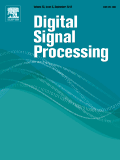
DIGITAL SIGNAL PROCESSING
Exploring the Intersection of Mathematics and TechnologyDIGITAL SIGNAL PROCESSING is a leading academic journal published by Academic Press Inc Elsevier Science, serving as a vital resource in the fields of applied mathematics, artificial intelligence, signal processing, and electrical engineering. With an impressive set of rankings, including a Q2 designation in multiple categories such as Applied Mathematics and Computer Vision and Pattern Recognition, this journal aims to disseminate high-quality research that addresses both theoretical and practical aspects of digital signal processing. Its rigorous peer-review process ensures the publication of original articles, review papers, and innovative applications, making it an essential platform for researchers and professionals dedicated to advancing this dynamic field. While currently not an open-access journal, it maintains a significant impact factor, reflecting its esteemed position within the academic community. The journal's ongoing commitment to exploring new trends and methodologies positions it at the forefront of digital signal processing research, driving both scholarly inquiry and practical application from 1991 to 2024.
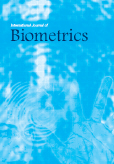
International Journal of Biometrics
Innovating the Future of Identity RecognitionInternational Journal of Biometrics is a distinguished platform dedicated to advancing research in the multifaceted areas of biometrics and its applications across various disciplines. Published by InderScience Enterprises Ltd in the United Kingdom, this journal serves as a vital resource for researchers, professionals, and students involved in applied mathematics, computer science, and electrical engineering. With an ISSN of 1755-8301 and an E-ISSN of 1755-831X, the journal provides a curated collection of innovative studies and reviews that contribute to understanding and improving biometric technologies. As of 2023, it holds a Q4 ranking across several relevant categories, reflecting its commitment to fostering knowledge in an emerging field. Though currently non-open access, it remains accessible to academic institutions and professionals, aiming to bridge gaps in biometrics research and practice. The journal covers a wide scope of topics, notifying readers about essential developments in image processing, pattern recognition, and electronic engineering applications, making it an indispensable resource for anyone interested in the dynamic field of biometrics.

Cognitive Computation and Systems
Bridging Cognitive Science and Computational Excellence.Cognitive Computation and Systems is an innovative open-access journal published by Wiley, dedicated to advancing the fields of Artificial Intelligence, Cognitive Neuroscience, and Computer Science Applications. Based in the United Kingdom, this journal has established itself as a key resource for researchers, students, and professionals alike since its inception in 2019. With a focus on the convergence of cognitive theories and computational methodologies, Cognitive Computation and Systems aims to publish high-quality research that bridges holistic cognitive processing with algorithmic design. Although the journal is currently categorized in the lower quartiles of its fields, it provides a unique platform for disseminating pioneering ideas that can drive the vital intersection of computer vision, pattern recognition, and psychology. Scholars can take advantage of its open-access model, ensuring that research findings are freely available, thus promoting wider knowledge sharing and collaboration within these rapidly evolving domains. With its ambitious scope and commitment to quality, this journal is poised to make a significant impact in its respective fields.